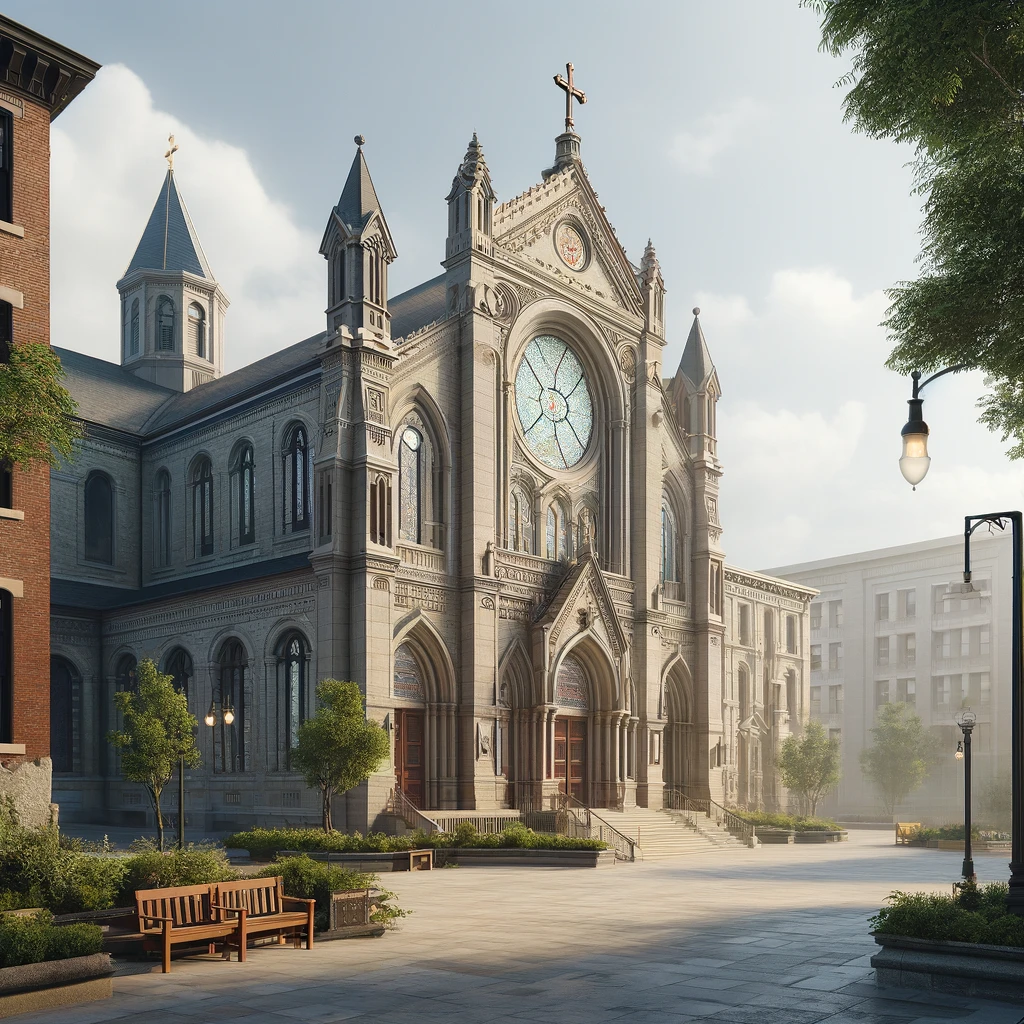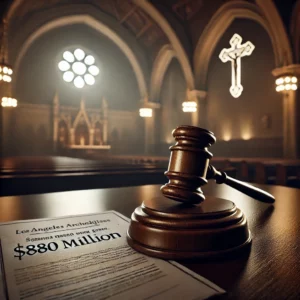How Did a Seven-Year Legal Battle Stay Hidden From Abuse Survivors?
The New Jersey Supreme Court ordered the release of hundreds of pages of previously sealed court documents on March 6, 2025, revealing a years-long secret legal battle over clergy abuse investigations that has remained hidden since 2018. The high court scheduled oral arguments for April 28-29 to determine if a grand jury investigation into decades of abuse allegations can proceed, potentially ending a legal standoff that began when then-Attorney General Gurbir Grewal promised a thorough investigation following Pennsylvania’s damning grand jury report on clergy abuse. While survivors have waited for justice since 2018, the Diocese of Camden has successfully blocked the investigation in lower courts by arguing that New Jersey grand juries cannot investigate historical allegations against religious organizations.
5 Key Points
- Court documents reveal that state grand jury subpoenas were sent to all five NJ dioceses, but only Camden refused to cooperate, filing legal challenges instead.
- Superior Court Judge Peter E. Warshaw Jr. ruled in Camden’s favor, stating grand jury presentments should refer to public affairs, not religious organizations.
- The legal battle remained completely hidden from public view until the unexpected release of a sealed transcript in February 2025.
- Survivors and victims’ advocates, including SNAP director Mark Crawford, expressed hope that the Supreme Court would allow investigations to proceed.
- First Assistant Attorney General Lyndsay Ruotolo stated their commitment to investigating “decades of sexual abuse” and “systematic failures to prevent it” never wavered despite legal obstacles.
What Promised Justice Have Abuse Survivors Been Waiting For Since 2018?
The newly released court documents show that in 2018 after Pennsylvania’s grand jury report revealed widespread clergy abuse in that state, New Jersey Attorney General Gurbir Grewal announced he would undertake a similar effort to uncover decades of allegations in New Jersey. He established a Clergy Abuse Task Force with grand jury subpoena power to compel testimony and demand the production of documents from the state’s five Catholic dioceses. For survivors of abuse at the hands of priests and other clergy, this announcement offered hope for accountability and acknowledgment of their suffering. Instead, as Mark Crawford, an abuse survivor and state director of the Survivors Network of those Abused by Priests, noted, “They may say that many of the offenders are dead. But their victims deserved to be heard.” Bill Crane, who along with his twin brother has alleged abuse by monks at Morristown’s Delbarton School in the 1970s and 1980s, expressed the toll of this lengthy silence: “It’s been a dark shadow over the whole state of New Jersey. It’s only when everything comes out that healing can occur.” For nearly seven years, these survivors watched and waited, wondering why the promised investigation seemed to disappear “into a black hole,” unaware that legal challenges had halted the process.
Which Diocese Blocked the Investigation and What Were Their Arguments?
While the Archdiocese of Newark and the Dioceses of Paterson, Metuchen, and Trenton reached agreements with the state on producing records, the Diocese of Camden mounted a legal challenge that brought the entire investigation to a standstill. According to the unsealed court filings, Camden’s attorneys argued that no state law allowed a grand jury to present such a case. They claimed it would violate constitutional guarantees of separation of church and state. In their brief, they claimed, “the state overreached by announcing that a grand jury presentment against the Roman Catholic Church would be forthcoming when presentments are limited to public affairs and conditions, not the internal operations of a religious entity.” This argument persuaded Superior Court Judge Peter E. Warshaw Jr., who ruled that grand jury presentments should refer to public affairs and conditions, not a religious organization. Warshaw expressed concern that a grand jury presentment would unfairly castigate individuals and impugn their integrity “without giving [them] the slightest opportunity to defend” themselves, specifically noting that many accused priests “were dead or of such advanced age that speaking up for oneself would be nearly impossible.” He questioned: “Who speaks for these individuals?” An appeals court later upheld this ruling. A spokesman for the diocese did not respond to requests for comment on the Supreme Court’s decision to hear the case.
What Have Investigators Been Trying to Accomplish Despite Legal Barriers?
First Assistant Attorney General Lyndsay Ruotolo emphasized that despite the legal obstacles, “our commitment to the work of the Clergy Abuse Task Force never wavered.” The Attorney General’s office has been “seeking to convene a grand jury to present evidence collected by prosecutors across the state regarding decades of sexual abuse, the conditions that made that abuse possible, and the systematic failures to prevent it — and to allow the grand jury, as the conscience of our community, to make recommendations to ensure widespread abuse by clergy can never happen again.” In their December brief to the Supreme Court, now unsealed, the Attorney General’s office argued that the trial court decision “dramatically and incorrectly” restricted the grand jury’s power to present its findings. The brief emphasized the severity of the matter: “This dispute concerns one of the most wrenching public harms in recent memory: decades of sexual abuse of children by members of the clergy, and the conduct that allowed it to go undetected and unaddressed for so long.” Following the high court’s decision to hear the case, Ruotolo expressed hope that “victims and survivors will have an opportunity to make their voices heard — and to speak to the real harms that we have never lost sight of.”
How Are Abuse Survivors Reacting to This Long-Awaited Development?
For survivors who have waited since 2018 for answers, the Supreme Court’s decision to hear the case represents a potential turning point after years of silence and secrecy. Mark Crawford, an abuse survivor and director of SNAP, called the court’s decision to hear the case and release documents “a big day,” adding that “such matters need to see the light of day.” The sentiment was echoed by Bill Crane, whose allegations of abuse at Delbarton School have yet to be addressed in a comprehensive state investigation. “Hopefully, the Supreme Court will do the right thing and reverse the lower court’s decision,” Crane said, emphasizing that healing can only begin when everything comes to light. Attorney Gregory Gianforcaro of Phillipsburg, who has represented many clergy abuse victims, expressed hope that the Supreme Court would “reverse the lower courts decisions and allow the Attorney General’s office to convene a grand jury to investigate the Catholic Church.” Gianforcaro emphasized that investigating childhood sexual abuse “is absolutely in the public’s interest whether it involves claims against the Catholic Church or any institution for that matter.” These reactions highlight the personal stakes of this legal battle for those who have carried the burden of abuse for decades while waiting for public acknowledgment and accountability.
What Will Happen If the Supreme Court Allows the Investigation to Proceed?
If the Supreme Court overturns the lower court rulings, the state could finally present evidence collected since 2018 to a grand jury for consideration. This would likely lead to a comprehensive report similar to Pennsylvania’s, detailing patterns of abuse and institutional failures within New Jersey’s Catholic dioceses over decades. Such a report would provide survivors with the public acknowledgment many have sought for years and could potentially identify previously unknown patterns of abuse or cover-ups. It could also lead to recommendations for institutional changes and reforms to prevent future abuse. The Attorney General’s office has emphasized they want “to allow the grand jury, as the conscience of our community, to make recommendations to ensure widespread abuse by clergy can never happen again.” For many survivors like Crane, who described the situation as “a dark shadow over the whole state,” such a report could provide a measure of closure and healing that has been denied during the seven years of secret legal proceedings. However, if the court upholds the Diocese of Camden’s position, it would likely end hopes for a comprehensive state investigation into historical clergy abuse in New Jersey, leaving many survivors without the answers and accountability they’ve sought since 2018.
FAQ
Q: Why did no one know about this legal battle until now?
A: The court proceedings were completely sealed from public view, with all filings kept confidential until the New Jersey Supreme Court ordered their release (with some redactions) on March 6, 2025. Even survivors and advocacy groups were unaware of the legal challenge.
Q: When did the New Jersey clergy abuse investigation begin?
A: Then-Attorney General Gurbir Grewal announced the investigation in 2018 following the release of a Pennsylvania grand jury report detailing widespread clergy abuse in that state.
Q: Which New Jersey dioceses were involved in this case?
A: State grand jury subpoenas were sent to all five Catholic dioceses in New Jersey: the Archdiocese of Newark and the Dioceses of Paterson, Metuchen, Trenton, and Camden. Four dioceses reached agreements with the state, but the Diocese of Camden challenged the grand jury’s authority.
Q: What is the main legal question before the Supreme Court?
A: The court must decide whether New Jersey grand juries have the authority to investigate and issue presentments about historical patterns of abuse within religious organizations or if such investigations are limited only to “public affairs and conditions,” as the lower courts ruled.
Q: What specific concerns did Judge Warshaw raise in his ruling?
A: Judge Warshaw worried that a grand jury presentment would unfairly criticize individuals, particularly deceased or elderly priests, without allowing them to defend themselves. He also questioned whether religious organizations fall under the “public affairs” that grand juries are authorized to investigate.
Q: When will the Supreme Court make its final decision?
A: No specific date for a decision has been announced. The court will hear oral arguments on April 28-29, 2025, and will issue its ruling sometime after those hearings.
Q: If the investigation proceeds, what would happen to accused priests who are deceased?
A: A grand jury investigation would focus on documenting patterns of abuse and institutional responses rather than bringing criminal charges. Since many accused priests are deceased, as Judge Warshaw noted, the investigation would primarily serve to document historical events rather than lead to prosecutions.
Citations
- Daniel Payne (March 7, 2025). New Jersey Supreme Court to Consider Whether Grand Jury Can Hear Clergy-Abuse Allegations. National Catholic Register. https://www.ncregister.com/cna/new-jersey-supreme-court-to-consider-whether-grand-jury-can-hear-clergy-abuse-allegations
- Ted Sherman (March 6, 2025). Secret legal fight over NJ clergy abuse probe revealed. NJ.com. https://www.nj.com/news/2025/03/secret-legal-fight-over-nj-clergy-abuse-probe-revealed.html







